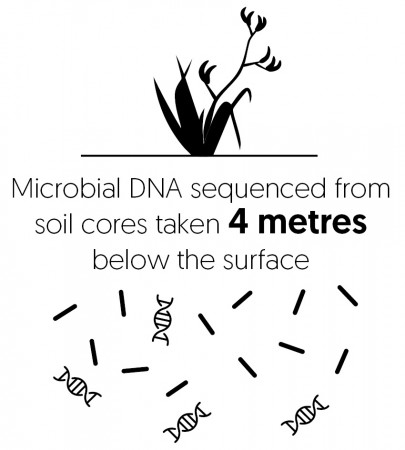A range of work in wetland biodiversity
Using eDNA to monitor wetland biodiversity
 Current biodiversity monitoring in wetlands tends to focus on large organisms such as birds and plants, which can be relatively slow to respond to environmental change. However, Dr Jamie Wood and colleagues at Manaaki Whenua have been using new eDNA techniques to monitor biological change in wetlands.
Current biodiversity monitoring in wetlands tends to focus on large organisms such as birds and plants, which can be relatively slow to respond to environmental change. However, Dr Jamie Wood and colleagues at Manaaki Whenua have been using new eDNA techniques to monitor biological change in wetlands.
The researchers sequenced microbial DNA from soil cores taken down to 4 metres below the surface in seven New Zealand wetlands, in one of the few studies globally to have studied wetland microbes at such depths. “The results showed distinct changes in microbial communities with depth. In more modified or drained wetlands, types of microbes responsible for carbon dioxide emissions were more common in the upper layers,” says Dr Wood.
Study co-author Dr Bev Clarkson says that there are many potential applications of the new eDNA approach. “We need to study more wetlands to refine this tool and see whether these patterns hold across different wetland types, but these preliminary results show that the technique works. Ultimately, eDNA may provide a useful tool for monitoring real-time wetland condition and identifying when critical thresholds are being approached. In the same way, eDNA may also serve as a tool for helping monitor the success of projects focused on the restoration of wetland ecosystems.”
What is eDNA?
DNA extracted from samples of soils, air, water, and other substrates (known as environmental DNA, or eDNA for short) is fast becoming a vital tool for studying a wide range of species, such as microbes, insects, fish, and other vertebrates, across many different ecosystems. The technique amplifies and then sequences all the DNA found in a sample, enabling species identifications to be made.
Applying the ‘leaf economics spectrum’ to wetlands
 Dr Clarkson has also recently published international research aiming to pin down understanding of plant leaf traits in wetland ecosystems at a global scale. The ‘leaf economics spectrum’ describes leaf traits ranging from slower-growing ‘conservative’ species, able to survive on limited resources, to faster-growing ‘acquisitive’ species that do better in environments with abundant resources. The leaf economics spectrum was developed for terrestrial plants from a variety of ecosystems, but its application to wetland ecosystems remained unclear.
Dr Clarkson has also recently published international research aiming to pin down understanding of plant leaf traits in wetland ecosystems at a global scale. The ‘leaf economics spectrum’ describes leaf traits ranging from slower-growing ‘conservative’ species, able to survive on limited resources, to faster-growing ‘acquisitive’ species that do better in environments with abundant resources. The leaf economics spectrum was developed for terrestrial plants from a variety of ecosystems, but its application to wetland ecosystems remained unclear.
Using data on 365 wetland species from 151 studies worldwide, Dr Clarkson and colleagues found that wetland plants cluster at the acquisitive end of the spectrum, with lower leaf mass per area of leaf, more leaf nitrogen and phosphorus, faster photosynthetic rates, and shorter leaf lifespan than non-wetland plants. These traits allow wetland plants to be specifically adapted to the complex and adverse conditions found in wetlands, such as lower levels of light, oxygen, and nutrients. The study fills an important knowledge gap in the role of trait-based ecology in understanding important wetland ecosystem processes and services.
